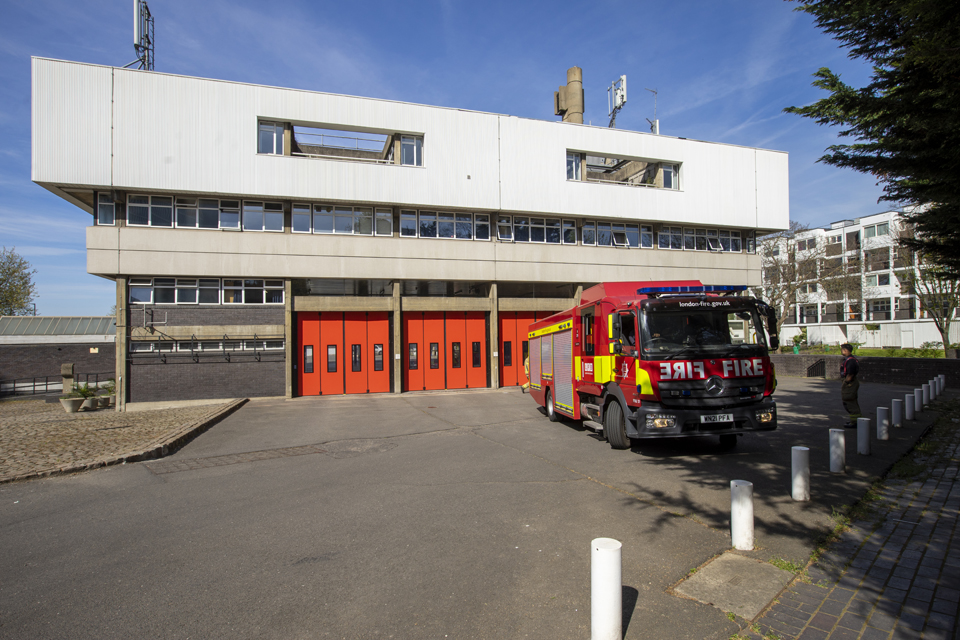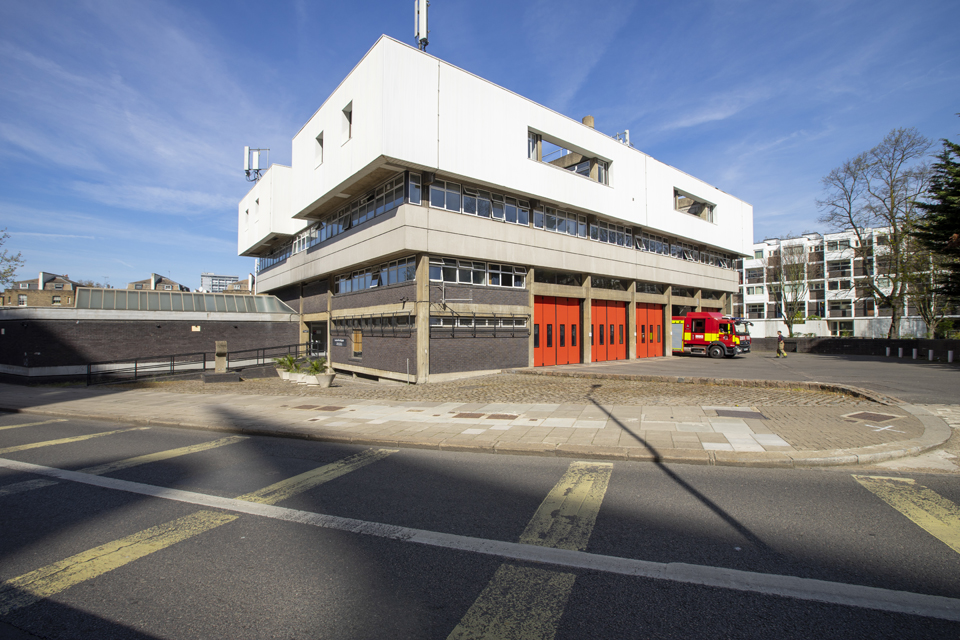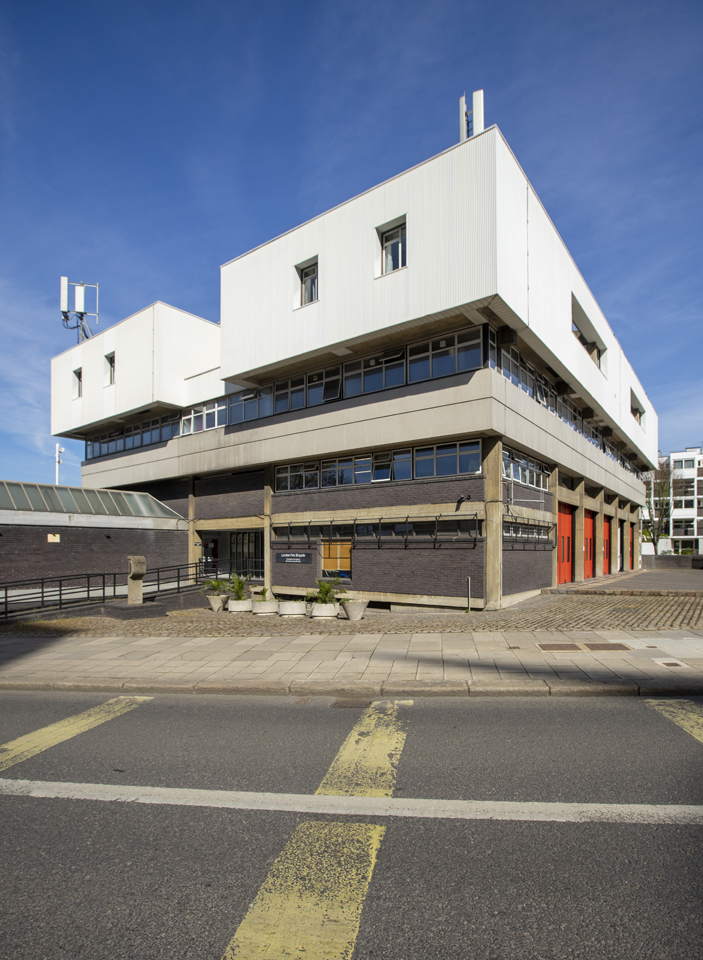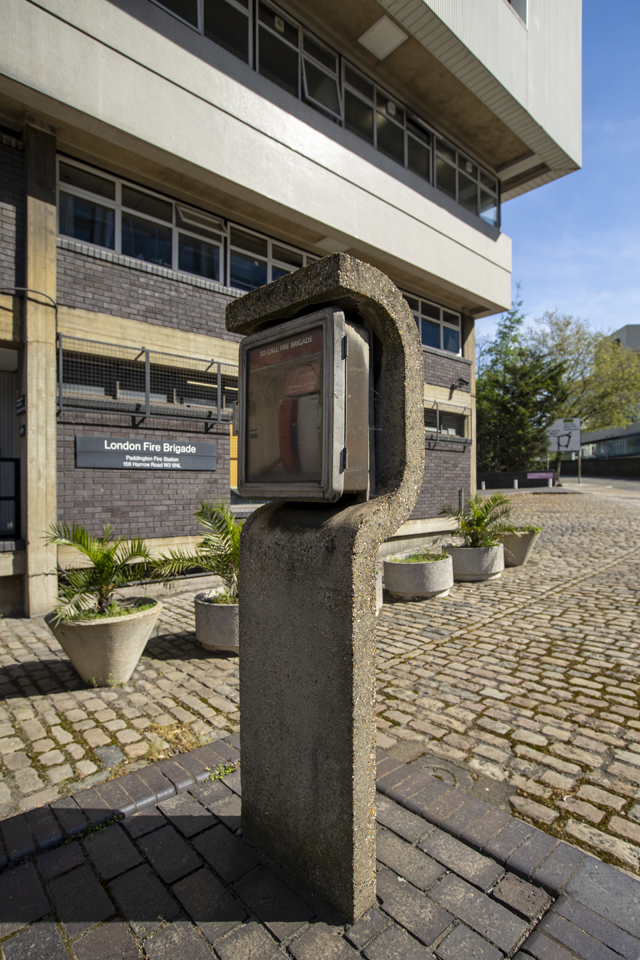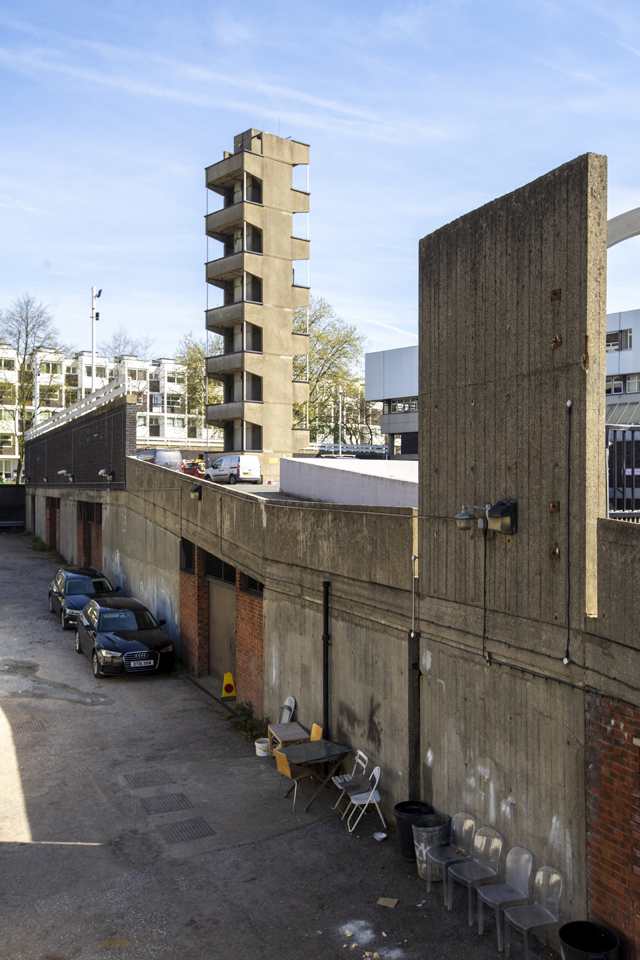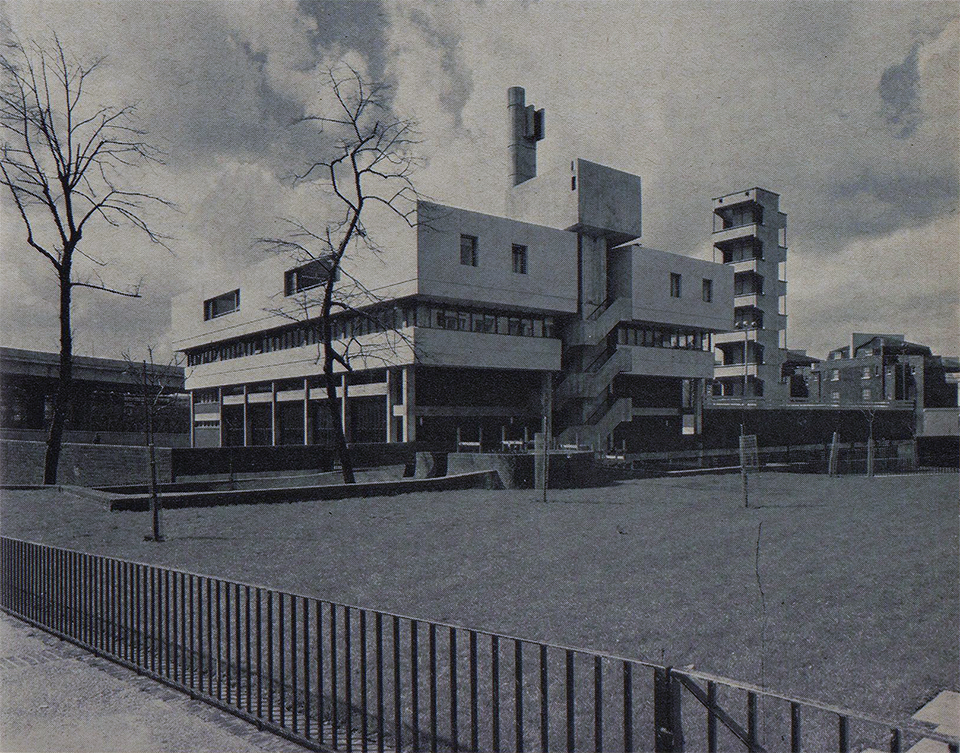Paddington Fire Station
1970
This is one of a number of post-war fire stations across London designed by the GLC Architects’ Department in the modernist-brutalist idiom. Those at Shoreditch and Bethnal Green have similar expressed concrete structure with dark brick infill panels. The standardised lower floors here act as a plinth to the more sculptural upper floors clad in white mosaic tile. Built in 1970 to serve the North West division of the London Fire Brigade, the scheme was partially informed by the adjacent GLC maisonettes of Warwick Crescents – part of the fire station site was given over to parking for residents and the height of the fire station was constrained so as not to be visible from Little Venice over the roofline of the houses. Taking advantage of the rise of Harrow Road, garages and training spaces were buried beneath the drill yard from which the practice tower rose. The training suite included two smoke rooms where a breathing school served the whole of the northern command making this a technical and spatially complex building within a tight site. The main building had residential accommodation above the equipment hall arranged horizontally to comply with the height restriction and was adjoined by an administration block as the station doubled as divisional headquarters. Sites were chosen according to strict geographical limits that aimed to ensure that all buildings were within 4 minutes of a fire station, often throwing up conundrums like this one, squeezed between the canal basin and the new aerial section of the A40. The fire station faces another service complex, that of the former British Rail Paddington maintenance depot (Bicknell and Hamilton, 1968). Architecturally, the most appealing elevation is that which faces the rear of Warwick Crescent, the articulated lift and stair core in the centre of the composition is part of an exercise in solid and void deftly handled for an industrial building type. The scheme was realised under Hubert Bennett’s tenure as Chief Architect, the project team was R. Bix, John Knight and Max Brewer.
